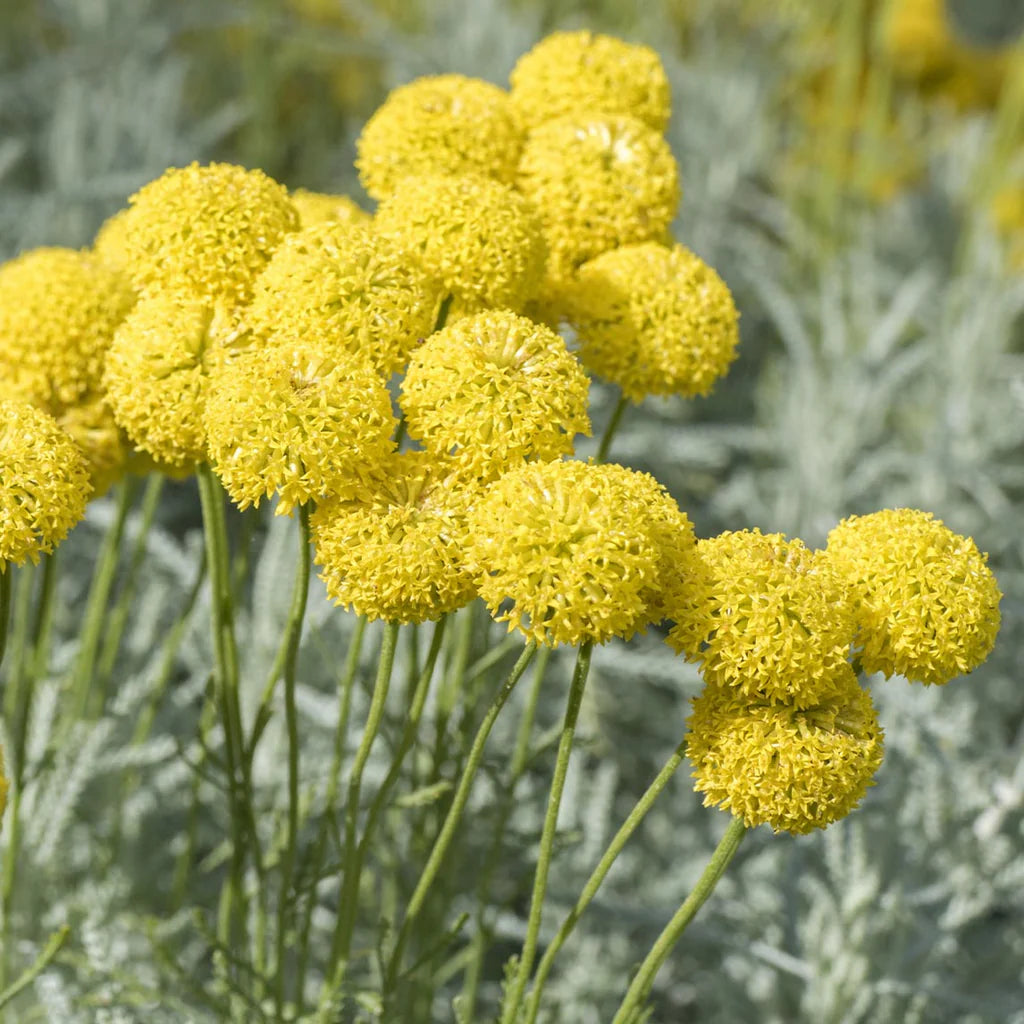Billy Buttons
Couldn't load pickup availability
Description
Billy Buttons, also known as Craspedia globosa, are distinctive and eye-catching plants that feature small, round, yellow flowers that resemble buttons. These native Australian plants are prized for their unique appearance, with bright golden-yellow blooms held atop tall, sturdy stems. Billy Buttons are commonly used in dried flower arrangements, as their unique shape and long-lasting flowers make them a favorite among florists and gardeners alike. With their striking yellow color, they make a bold statement in both fresh and dried floral designs.
Why Choose Billy Buttons
- Unique Appearance: The spherical, golden-yellow blooms of Billy Buttons are unlike any other flower, adding a touch of whimsy and color to gardens and floral arrangements.
- Drought-Tolerant: Billy Buttons are incredibly drought-tolerant once established, making them an ideal choice for low-maintenance gardens, xeriscaping, or areas with dry conditions.
- Attracts Pollinators: These flowers attract a variety of pollinators, including bees, making them a great addition to any pollinator-friendly garden.
- Long-Lasting Blooms: The unique spherical flowers are long-lasting, both in the garden and when dried, making them perfect for use in floral arrangements, crafts, or as a dried flower accent in the home.
- Low-Maintenance: Billy Buttons are easy to grow and maintain, requiring minimal care once established, which makes them suitable for both novice and experienced gardeners.
How to Grow and Care for Billy Buttons
- Planting: Billy Buttons prefer well-drained, sandy or loamy soil and full sun. They thrive in dry to moderately moist conditions but cannot tolerate heavy, wet soils. Choose a location with full sunlight for best growth and blooming results.
- Watering: Once established, Billy Buttons are drought-tolerant and require minimal watering. Water regularly during the establishment period, but reduce watering once the plant is established. Over-watering can lead to root rot.
- Soil: Well-draining soil is essential for Billy Buttons. Sandy or loamy soil works best, and they will not thrive in clay-heavy soils. Incorporating organic matter can improve soil structure if needed.
- Pruning: Deadheading spent blooms can encourage a longer blooming period. Cut back the plant after flowering to maintain a tidy appearance. You may also prune the plant to shape it as desired, but avoid heavy pruning to prevent damage to the plant.
- Fertilization: Billy Buttons are not heavy feeders, so they don’t require much fertilization. A light application of general-purpose fertilizer in the spring can promote healthy growth, but too much fertilizer may result in weak growth.
Benefits of Growing Billy Buttons
- Aesthetic Appeal: Billy Buttons add a striking visual element to the garden with their bold yellow color and unique spherical blooms. They are great for flower beds, borders, or as a focal point in any garden design.
- Drought-Resistant: Once established, Billy Buttons are highly drought-resistant, making them ideal for dry or water-scarce climates. This hardiness allows gardeners to conserve water and reduce maintenance efforts.
- Pollinator Support: The vibrant yellow blooms attract pollinators like bees, making Billy Buttons a great choice for creating a pollinator-friendly garden.
- Ideal for Dried Flowers: Billy Buttons are popular in the dried flower industry due to their long-lasting blooms. They can be used in arrangements, wreaths, and crafts, providing a pop of color year-round even after they have dried.
- Low Maintenance: Billy Buttons are hardy and low-maintenance, requiring minimal care once established. They thrive in dry conditions and do not need frequent watering, making them an excellent choice for gardeners looking for a resilient, easy-to-care-for plant.
Billy Buttons are a versatile and striking addition to any garden, offering both aesthetic beauty and practical uses. Whether you’re adding them to a flower bed, using them for dried floral arrangements, or creating a pollinator-friendly space, these unique plants will surely make a lasting impression.









